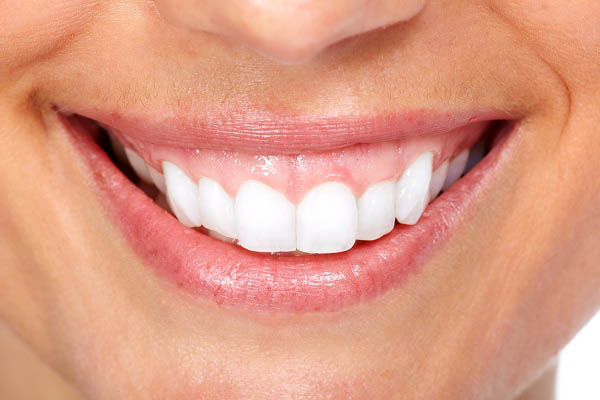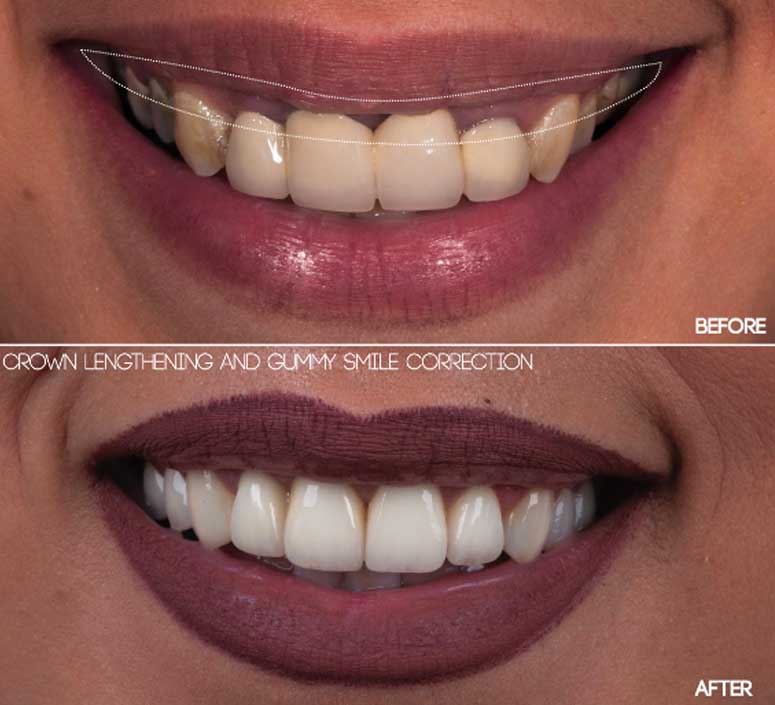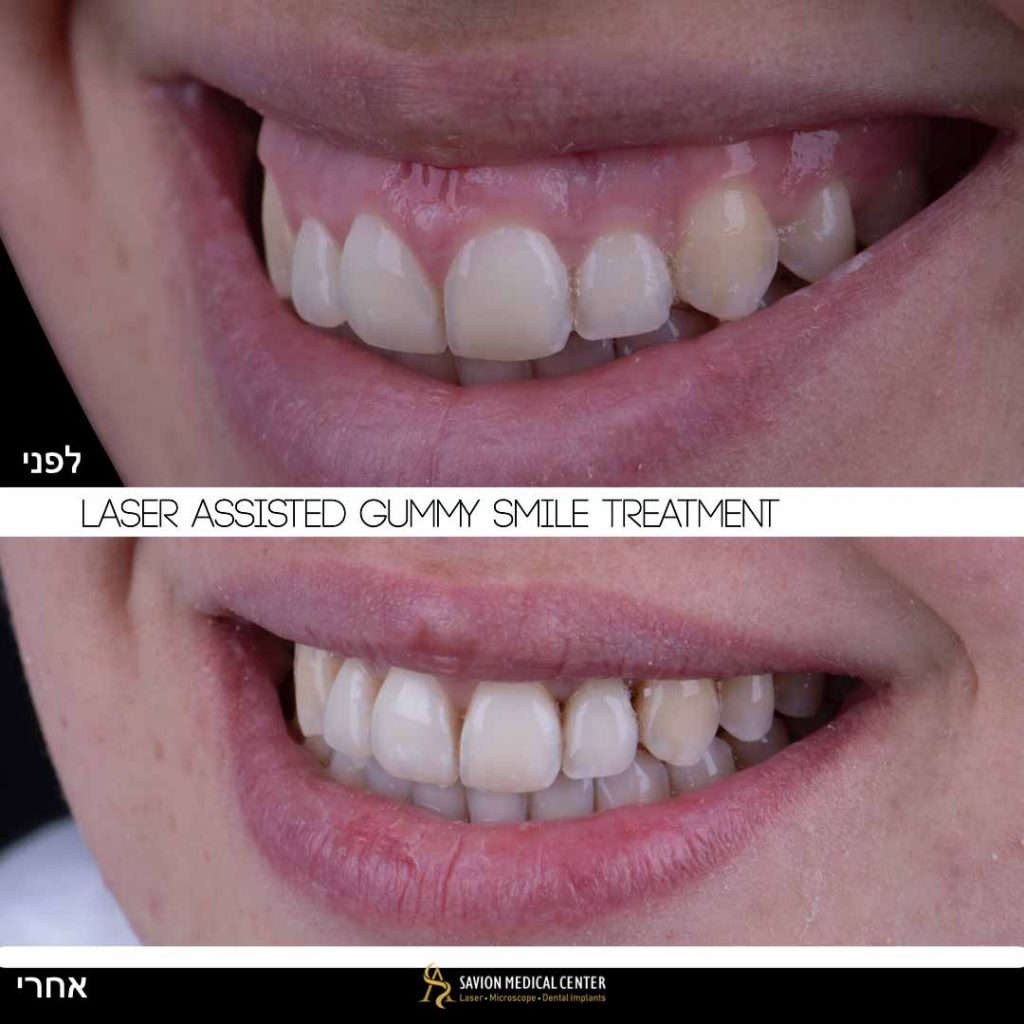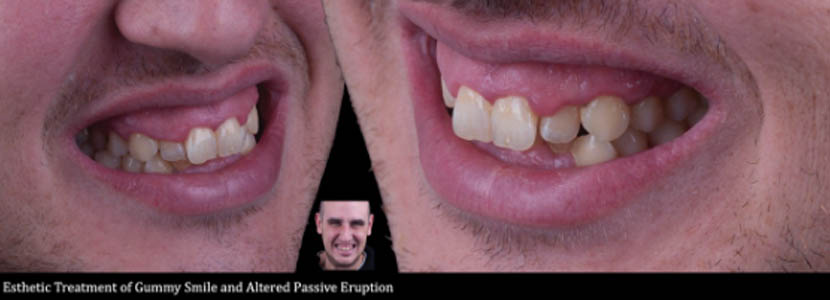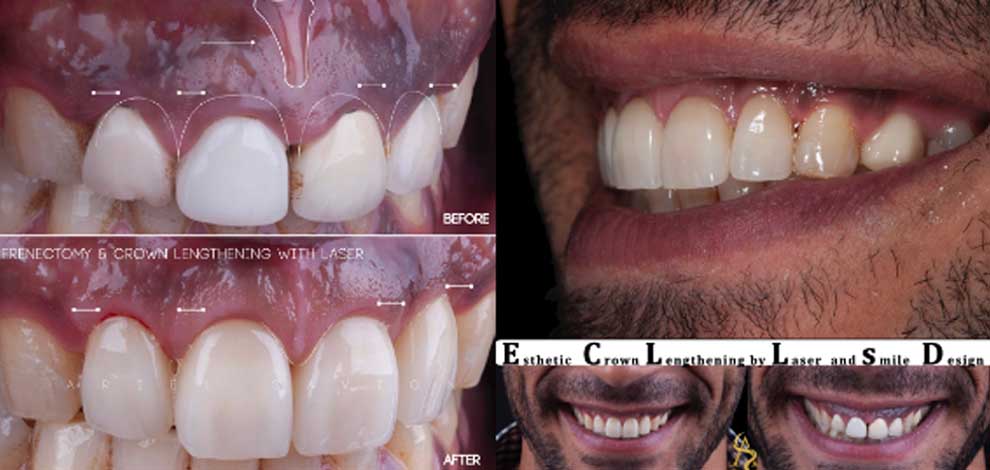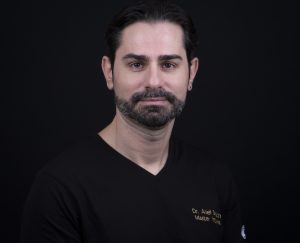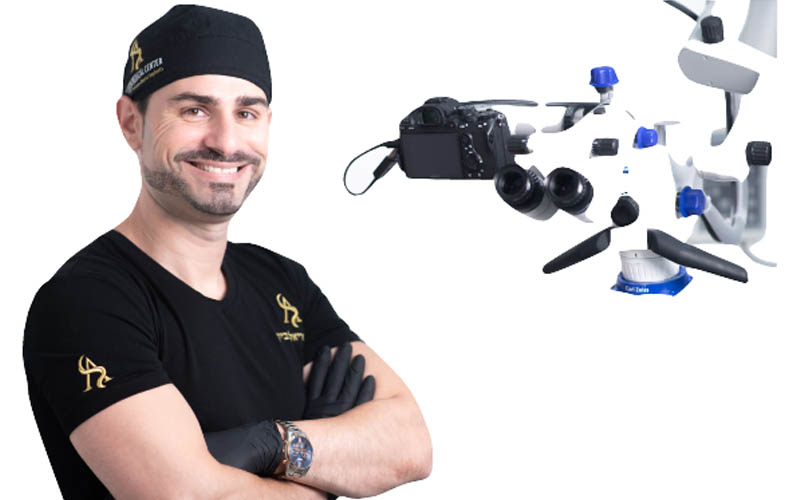A gummy smile, characterized by excessive gingival display during smiling and/or speaking. Multiple factors can contribute to this condition, including altered passive eruption of teeth, maxillary skeletal excess, protruding anterior teeth, thin or hyperactive upper lip, or a combination of these factors. Therefore, accurate diagnosis of the underlying cause is essential.
Treatment options may include crown lengthening surgery (in cases of altered passive eruption), orthodontic treatment, orthognathic surgery (for maxillary skeletal excess), lip mobility restriction procedures such as lip repositioning surgery, and/or combined techniques using botulinum toxin injections for muscle relaxation.
Dr. Ariel Savyon
Dentist since 2007, holds a double master's degree (Germany) in laser science and implantology (dental implants).
Serves as medical director of the dental corporation "Savyon Medical Center Ltd. Owner of a prestigious study club master_implant, treating dentists in various fields. The only certified instructor in Israel of the World Clinical Laser Institute in the field of laser science in dentistry in Israel.
Dr. Savyon, an opinion leader for leading companies in Israel and around the world, a researcher and international lecturer in the field of laser dentistry, periodontal medicine, and dental implants.
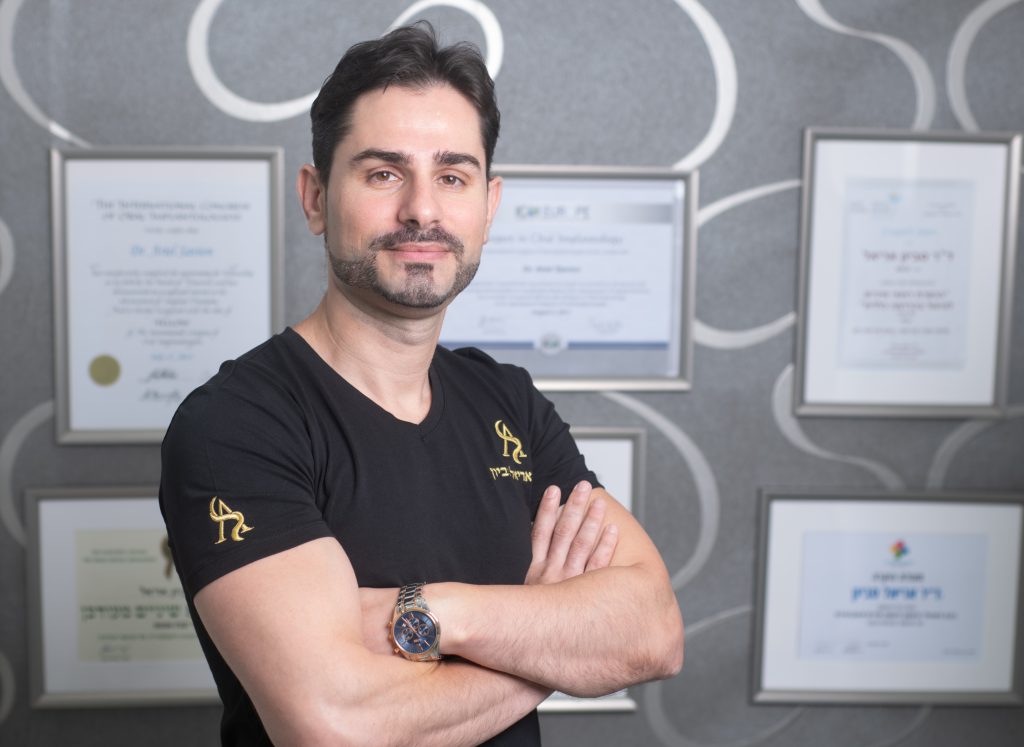
Treatment Selection Strategy
This article focuses on cases of altered passive eruption as the primary cause of gummy smile (excessive gingival display), which is commonly encountered in clinical practice.
The literature demonstrates that crown lengthening surgery contributes to proper gingival-lip relationship, enhanced dental aesthetics, and improved smile harmony. However, when additional factors contribute to the condition—such as maxillary skeletal excess, protruding anterior teeth, thin upper lip, hyperactive or asymmetric lip—crown lengthening alone will not resolve the condition, and patients may require additional periodontal procedures such as lip repositioning surgery.
Laser Assisted Lip Repositioning Using Erbium Technology
One of the primary goals of plastic periodontal surgery is to create an ideal smile for patients. The objective of lip repositioning surgery is to reduce excessive gingival display by restricting the movement of the smile elevator muscles.
The surgical technique is performed using erbium laser technology, replacing the conventional scalpel approach. The procedure involves removing a strip of mucosa from the buccal vestibule using laser technology, followed by suturing with absorbable sutures to attach the lip mucosa to the mucogingival junction. By shortening the buccal vestibule, excessive elevation of the upper lip during smiling is prevented.
Research demonstrates that in patients with thin or hyperactive upper lips, lip repositioning surgery can effectively restrict smile elevator muscle movement and reduce gingival visibility. Additionally, in cases involving jaw deformities, orthodontic treatment combined with lip repositioning surgery is the preferred approach to establish proper maxillomandibular relationships and reduce gingival display during smiling. However, this procedure is more invasive and often associated with significant morbidity.
In cases without severe jaw deformities, lip repositioning surgery can serve as an alternative treatment to reduce gingival appearance.
Clinical Case Presentation
A 25 year old patient presented with complaints of excessive gingival display and an unaesthetic smile. Clinical examination revealed altered passive eruption with tooth crowns concealed by excessive gingival tissue.
Phase 1: Documentation including studio photography and radiographic imaging, with measurement of gingival display during smiling.
Phase 2: Following treatment planning, crown lengthening was performed using dual laser technology to expose the crowns hidden by excess gingival tissue.
After gingival contouring and establishing new crown lengths, a tissue elevator was used (images not shown) for bone removal and recontouring to achieve a more natural and aesthetic appearance. The surgery concluded with delicate suturing using microsurgical techniques (6/0 sutures) under microscopic magnification to accelerate healing.
Post-operatively, the patient received cold laser therapy for biostimulation and enhanced cellular activity to minimize post-operative swelling and discomfort. The patient was scheduled for follow-up after 10 days without requiring antibiotics or analgesics.
Following crown lengthening surgery and several months of healing, the patient began orthodontic treatment using Invisalign clear aligners. The patient expressed high satisfaction with the results, and due to treatment success, lip repositioning was not required. This approach provided long-term smile improvement compared to botulinum toxin injections, which require retreatment every three months.
Research Evidence on Lip Repositioning Surgery
The literature on this surgical procedure consists primarily of case reports involving limited numbers of treated patients. Generally, all cases demonstrated favorable aesthetic outcomes and increased patient satisfaction. Although all studies reported uncomplicated healing, complaints of upper lip "tension" during smiling and speaking in the first post-operative week were frequently reported. Some researchers advocate for detaching the smile muscles during surgery to prevent lip relapse and reduce tension. Conversely, tension as a side effect is temporary and actually correlates with rapid surgical recovery.
Currently, only two prospective studies have evaluated surgical outcomes. The first study presented 6 month results following lip repositioning surgery. Clinical measurements of gingival display and upper lip thickness were recorded at baseline and at 3 and 6 months post-surgery. Compared to pre-operative data, gingival display decreased by approximately 4.7mm at 3 months and 4.5mm at 6 months. Additionally, researchers observed a correlation between reduced gingival display and lip thickness.
The second study demonstrated a surgical technique involving levator labii superioris muscle removal for gummy smile correction. Results showed an average gingival display reduction of 3.31mm at 6 months. The study concluded that this technique was effective in reducing gingival exposure during smiling.
In both studies, participants had no structural problems with the maxilla and no altered tooth eruption. Therefore, the study populations were limited to patients with short or hypermobile upper lips. Additionally, these studies presented short-term follow-up (6 months), and the long-term stability of gingival display correction through lip repositioning surgery remains unclear.
Conclusion
Lip repositioning surgery may serve as an alternative for improving excessive gingival display outcomes. However, crown lengthening with laser technology should be considered first in cases of altered passive eruption, followed by reassessment.
When lip repositioning surgery is indicated, it is recommended to perform the procedure using light energy and laser healing protocols for faster recovery compared to conventional scalpel techniques. An alternative option is botulinum toxin for muscle relaxation; however, this approach is temporary and requires maintenance treatment.





